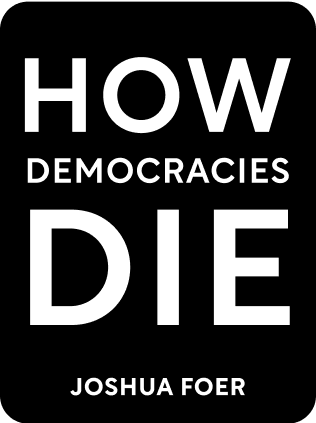

This article is an excerpt from the Shortform book guide to "How Democracies Die" by Steven Levitsky and Daniel Ziblatt. Shortform has the world's best summaries and analyses of books you should be reading.
Like this article? Sign up for a free trial here .
Is the U.S. a failed democracy? What makes a failed democracy, anyway?
The U.S. is not a failed democracy, but it has faced numerous challenges, and there are those in power who threaten the rights and freedoms of Americans every day. This is why it’s important to prioritize democratic principles.
Keep reading to find out how we can prevent the U.S. from becoming a failed democracy.
Is the U.S. a Failed Democracy?
We’ve explored the grave threats facing American democracy today—increasing polarization, no-holds-barred electoral competition, and the abandonment of traditional democratic norms. Worse still, the weakened state of domestic democracy has only emboldened autocratic leaders around the world in countries like Hungary, Turkey, and Russia.
In this chapter, we look at what might lie ahead for American democracy and explore some of the structural reforms that can help rescue and strengthen it.
The Future of U.S. Democracy
What lies ahead for American democracy? Although we cannot know the future with complete certainty, there are three possible scenarios for representative government in the United States:
- Democratic recovery
- Authoritarian takeover
- Worsening polarization
Let’s explore what each of these scenarios might look like.
U.S. Failed Democracy and Recovery
This is the most optimistic vision for American democracy. This is a world in which the Trump era proves to be short-lived and leaves behind few lasting effects. It might entail him losing reelection (possibly in a landslide that wipes out Republicans at the federal, state, and local levels) or even being removed from office via impeachment or resignation.
Under this scenario, Trump and the authoritarian forces he represents are swiftly replaced by new pro-democratic reforms that strengthen the republic. Future historians might look back on the Trump years as a brief aberration, a period during which America stared into the brink of authoritarianism and decided to step back.
However, this scenario is unlikely. As we’ve explored, the forces within the Republican Party that enabled Trump long preceded him—and they are likely to be in place long after he is gone from the political scene. Unfortunately, Trump may be more of a symptom than a cause of the current democratic crisis.
Authoritarian Takeover
The next scenario for the future is certainly the grimmest. This would be a world in which the Republican Party continues to score electoral success with its shrinking and increasingly radicalized white Christian base. This is certainly a real possibility—throughout history, dominant ethnic and religious majority groups haven’t typically yielded their dominant political and social status willingly and peacefully.
This is a future in which the Republican Party uses its majorities at the federal and state levels to rig the rules in its favor and reshape the courts, gerrymander the electorate, and systematically disempower non-whites through voter ID laws, mass deportations, and harsh immigration restrictions.
Worsening Polarization
The third and perhaps most likely scenario is one of continually worsening polarization. We can catch a glimpse of this future in North Carolina. When Republicans took control of the state legislature there in 2010, they passed one of the most aggressive and racially discriminatory gerrymanders in the country. The new electoral map locked in Republican supermajorities at the state and federal levels, even in election cycles where the party was outvoted by Democrats.
This Republican majority worked with the Republican governor to pass some of the harshest voter ID laws in the nation, while reducing early voting and ending voting pre-registration for 16- and 17-year-olds. These were nakedly partisan and anti-democratic maneuvers, done solely to make it more onerous for their political opponents to exercise the franchise.
When voters elected a Democratic governor in 2016, the Republican legislature continued its hardball tactics, using its veto-proof majority to strip powers from the incoming governor, allowing them to pack the state executive branch with their partisans—even after losing the election. These measures were extreme violations of institutional forbearance.

———End of Preview———
Like what you just read? Read the rest of the world's best book summary and analysis of Steven Levitsky and Daniel Ziblatt's "How Democracies Die" at Shortform .
Here's what you'll find in our full How Democracies Die summary :
- How shared norms are essential for preserving democracy
- Why the Trump presidency threatened those shared norms
- Why democracy goes beyond individual leaders and parties and must be a shared enterprise among committed individuals






